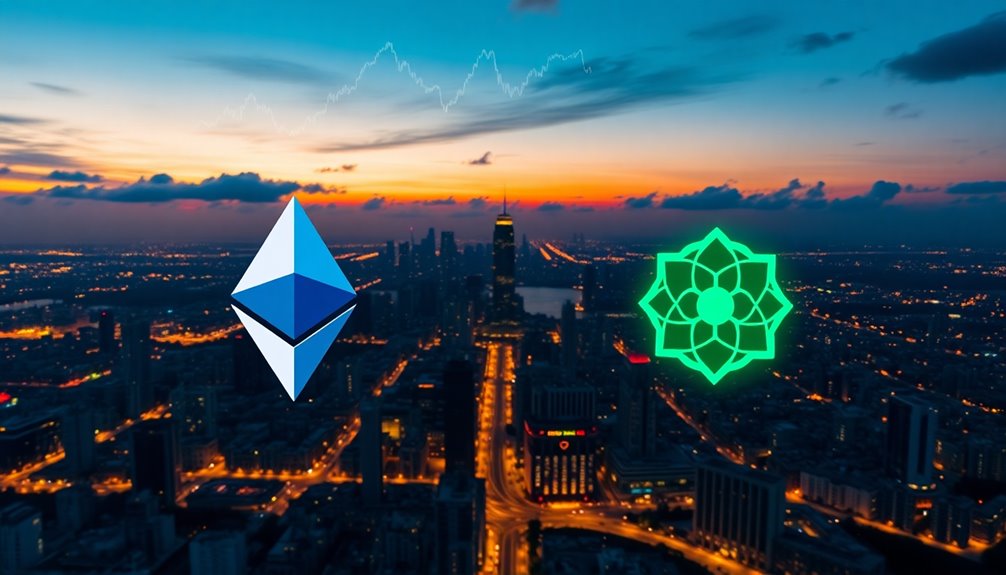You might have noticed a growing conversation around Solana and Ethereum lately. Franklin Templeton's insights reveal some intriguing contrasts between the two, particularly in transaction efficiency and costs. Solana's impressive speed and affordability are catching the eyes of developers, while Ethereum's longstanding network faces notable hurdles. As the landscape shifts, it raises important questions about the future of these blockchains and what it means for users and developers alike. What's driving this change?

In the rapidly evolving world of blockchain technology, understanding the differences between Solana and Ethereum is crucial for anyone looking to navigate this landscape.
Solana boasts an impressive transaction speed, processing over 4,000 transactions per second, compared to Ethereum's 15-30 TPS. This speed advantage makes Solana particularly appealing for high-frequency applications, allowing for greater transaction volumes without the slowdowns often seen on Ethereum due to network congestion. Furthermore, the rapid growth of Solana's ecosystem attracts projects seeking speed and low fees.
The consensus mechanisms of these two platforms further differentiate them. Solana employs a unique combination of Proof of History (PoH) and Proof of Stake (PoS), which enhances transaction speed by timestamping blocks as they're created. In contrast, Ethereum has transitioned to a PoS system to improve efficiency and reduce energy consumption.
While both platforms prioritize security, Ethereum's long-standing reputation offers a level of trust among developers that Solana is still working to establish.
When it comes to fees, Solana's cost efficiency stands out. With transaction fees averaging around $0.02, it's a more attractive option for users engaging in frequent transactions. On the other hand, Ethereum's fees can skyrocket during peak usage, sometimes exceeding $50 per transaction. This disparity in transaction costs can significantly impact users and developers, making Solana a more viable choice for those looking to minimize expenses.
Despite Ethereum's larger market capitalization of over $344 billion compared to Solana's $103 billion, the latter's ecosystem is growing rapidly. While Ethereum boasts a well-established network of thousands of decentralized applications (dApps) and DeFi projects, Solana is carving out its niche, particularly in gaming and NFT marketplaces.
With initiatives like the Solana dApp Store, developers are increasingly drawn to its potential. However, the higher node costs associated with Solana raise concerns about centralization, presenting a stark contrast to Ethereum's more decentralized approach. This factor may influence your decision if you're a developer considering where to build your applications.
Ultimately, both Solana and Ethereum have their strengths and weaknesses. If you prioritize transaction speed and low fees, Solana might be the better option. However, if you value a mature ecosystem with a plethora of dApps, Ethereum is the way to go. Understanding these nuances can empower you to make informed decisions as you navigate the blockchain landscape.










